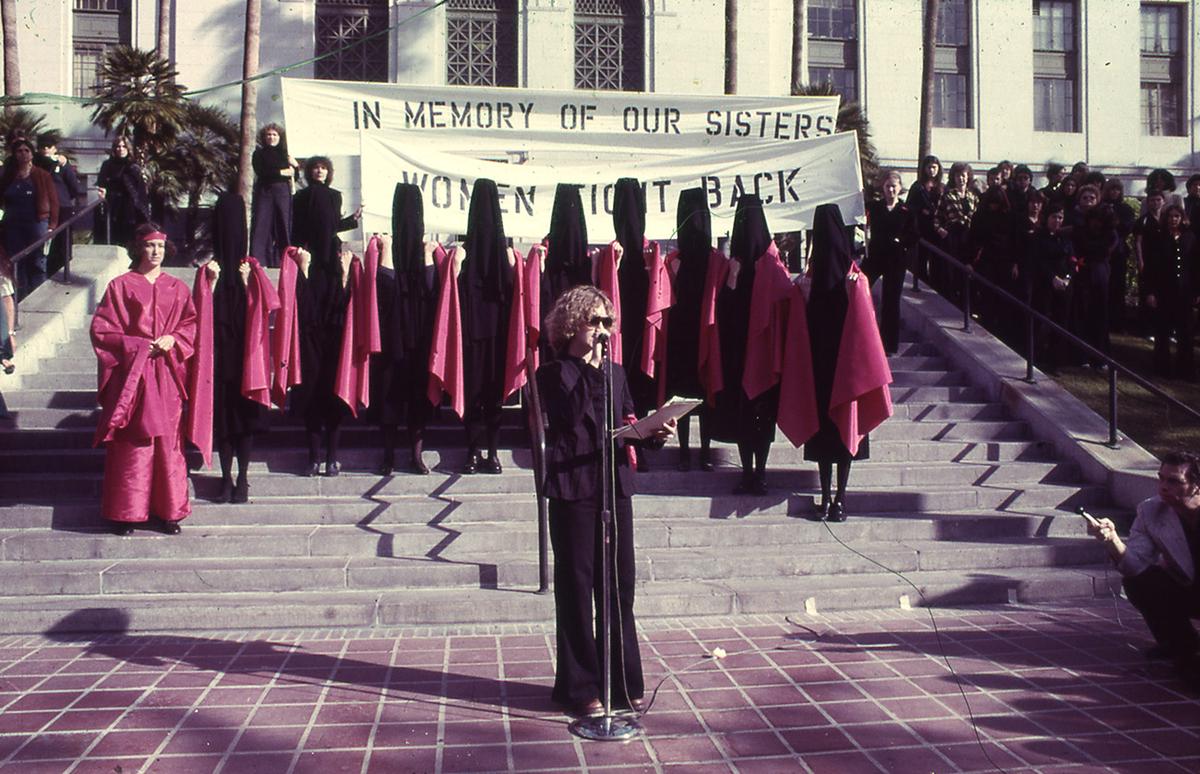Historical Context of Feminist Art
The feminist art movement of the 1970s emerged alongside the sexual revolution, bringing significant changes to the art world. Artists like Judy Chicago and Miriam Schapiro created spaces that resonated with untold stories of femininity and sexuality. Their project Womanhouse at the California Institute of the Arts transformed a dilapidated building into a vibrant expression of gender-related struggles.
These artists pushed boundaries, encouraging open discussions about women's experiences. The era marked a shift from passive observation to active exploration of identity and sexuality. Artists like Sylvia Sleigh and Hannah Wilke reimagined the body as a symbol of autonomy rather than an object to be judged.
The Roe v. Wade decision of 1973, legalizing abortion, further fueled feminist artists. Their work became a medium for change, battling for visibility and consideration. Women used art to celebrate their bodies and experiences without societal judgment, propelling forward the catalyst for change.
Reclaiming the Female Body
Sylvia Sleigh, Annie Sprinkle, and E.V. Day were key figures in this artistic rebellion, engaging with themes of nudity in ways that challenged tradition. Sleigh's detailed portraits of male nudes subverted the painter's gaze, while Sprinkle used her own body as a canvas in performance art that merged aspects of her career in pornography with feminist ideals.
E.V. Day's work played with the concept of transformation. Her installation "Exploding Couture" distorted recognizable images of femininity into abstract forms, symbolically shattering predetermined roles assigned by society.
These artists celebrated the female form as a potent force of nature, exploring it as a site of:
- Identity
- Liberation
- Self-determination
Their work injected a raw and refreshing ideology into popular cultural consciousness, transforming art into a battleground for change and standing at the forefront of a feminist future.
Eroticism as a Political Tool
Eroticism in feminist art became a vibrant political statement against patriarchal underpinnings. Artists like Joan Semmel and Betty Tompkins used their canvases to interrogate societal norms. Semmel's explicit paintings of intertwined bodies confronted viewers with the reality of human intimacy, while Tompkins' large-scale paintings celebrated sexual intimacy, challenging viewers to confront their own discomfort and biases.
The political potency of erotic art lies in its ability to force reflection on issues of consent and autonomy. By flipping the narrative, feminist artists presented nudity and sexuality as empowering choices, dismantling entrenched roles of subjugation imposed on women throughout history.
The gallery space transformed into a domain of resistance and cultural critique, where each piece became a testament to the resilience and audacity of artists who refuse to be bound by antiquated ideals.
Exhibitions like "Black Sheep Feminism: The Art of Sexual Politics" continued this dialogue, incorporating elements of pornography to confront the juxtaposition of female empowerment with sexual self-determination.
Intersectionality in Feminist Art
Modern feminist art embraces intersectionality, recognizing the diverse expressions of identity that intertwine beyond gender. Artists like Lisa Yuskavage, Cassils, and Naima Ramos-Chapman explore the multiplicities of identity, celebrating racial, queer, and socio-economic nuances.
Yuskavage's paintings examine female archetypes that refuse simple classification. Cassils' performance art challenges binary thinking and highlights the diverse spectrum of gender identity. Ramos-Chapman's film work addresses intersections of racial and sexual identities, exploring untold stories of women often rendered invisible by dominant cultural perspectives.
These artists:
- Disrupt conventional narratives
- Provoke critical thinking
- Foster dialogue about myriad identities
Their work challenges not only systemic gender bias but also the erasure and marginalization of other identities. By approaching art with an intersectional lens, they unravel a fuller story, enriching the dialogue around feminist art and eroticism with layers that reflect the nuanced reality of human experience.

Controversial Feminist Artworks
Controversial feminist artworks have sparked debate and discussion throughout the years. These bold creations confront and challenge audiences with their audacious depictions of gender and sexuality.
Notable controversial works include:
- Judy Chicago's "The Dinner Party" (1979) – commemorates significant women with abstract renditions of female genitalia
- Carolee Schneemann's "Interior Scroll" (1975) – a performance where she pulled a scroll from her vagina
- Marina Abramović's "Rhythm 0" (1974) – explored agency and consent by inviting viewers to interact with her passive body
These works embrace controversy as a crucial component of their story, provoking audiences to look beyond aesthetics and confront deeply-entrenched societal norms. They remain vital in pushing the boundaries of how art interacts with the human experience, inviting viewers to critically engage with the messages conveyed.
Feminist art has consistently challenged and reshaped societal norms, offering a powerful commentary on gender and identity. Through their bold expressions, artists have questioned and redefined the story surrounding women's experiences. This artistic movement continues to be a crucial force in advocating for visibility and change, reminding us of the transformative power of art in society.
- Chicago J, Schapiro M. Womanhouse. California Institute of the Arts. 1972.
- Sleigh S. The Turkish Bath. 1973.
- Day EV. Exploding Couture. 1999-2002.
- Semmel J. Intimacy-Autonomy. 1974.
- Tompkins B. Fuck Painting #1. 1969.
- Chicago J. The Dinner Party. Brooklyn Museum. 1979.
- Schneemann C. Interior Scroll. 1975.
- Abramović M. Rhythm 0. Studio Morra, Naples. 1974.
























